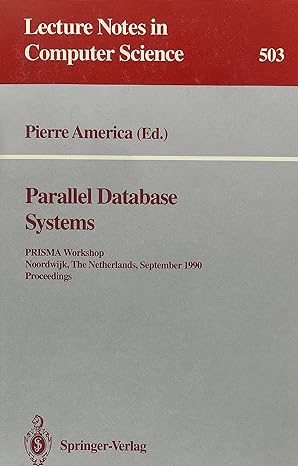Question
Population growth at a constant annual growth rate of r% is governed by a simple equation: Pn = Pn1 + r Pn1 where Pn is
Population growth at a constant annual growth rate of r% is governed by a simple equation: Pn = Pn1 + r Pn1 where Pn is the population in the n-th year, and Pn1 is the population in the previous year. Here r is a number between 0.0 and 1.0 representing a percentage (e.g. 0.3 = 30%). You can see that to get the new population you simply add r% of the previous population to the previous population to obtain the new population for the next year. The above formula assumes that population can grow forever with no restrictions. In reality, population growth is restricted by available resources such as food or energy. If the environment can only support a maximum population of K, then the growth rate r i the equation above has to be further multiplied by (1Pn/K). With this added to the model, the population growth will slow as the population approaches K. Write a recursive function that takes four parameters: The initial population in year 1. The year n for which we want to compute the population. The annual growth rate r (a oating point value between 0.0 and 1.0, e.g. 0.2 means 20%). The maximum population K that the environment can support. and returns the population in year n. To verify that your program works, test your function with r = 0.1 (i.e. 10% growth rate), K=10000, and an initial population of 600. Using these parameters, compute the population for years 1 through 75. Language is python 3.0
Step by Step Solution
There are 3 Steps involved in it
Step: 1

Get Instant Access to Expert-Tailored Solutions
See step-by-step solutions with expert insights and AI powered tools for academic success
Step: 2

Step: 3

Ace Your Homework with AI
Get the answers you need in no time with our AI-driven, step-by-step assistance
Get Started


